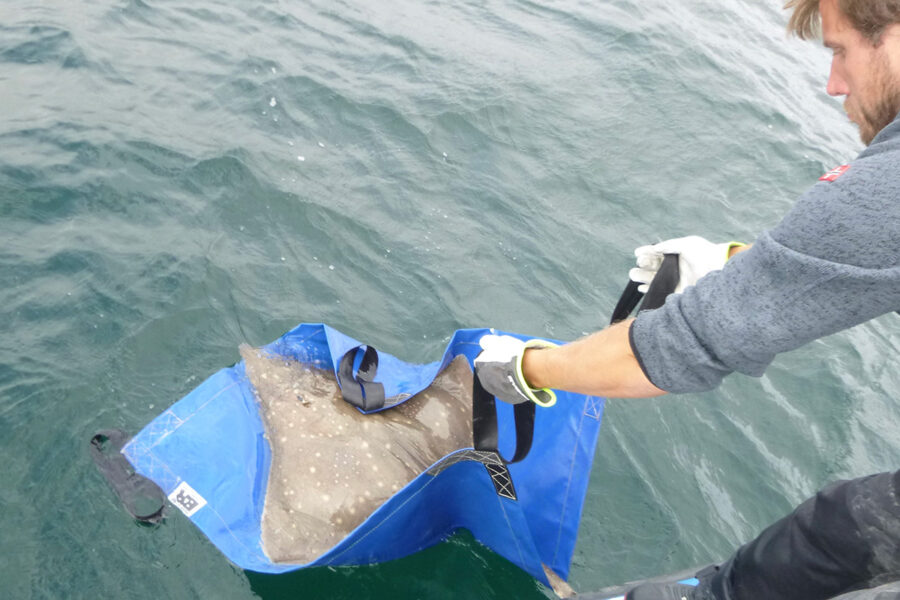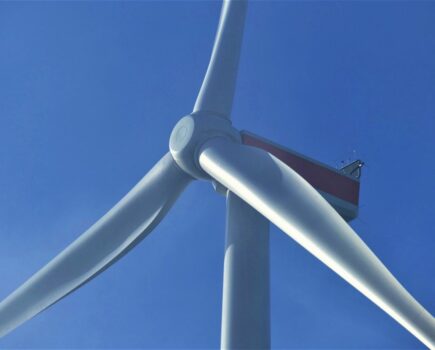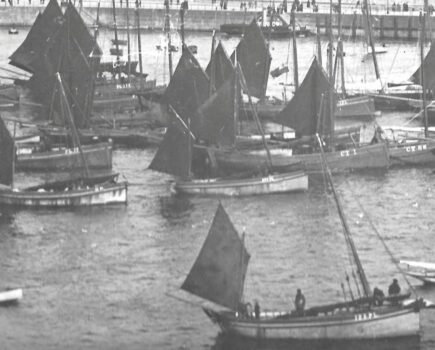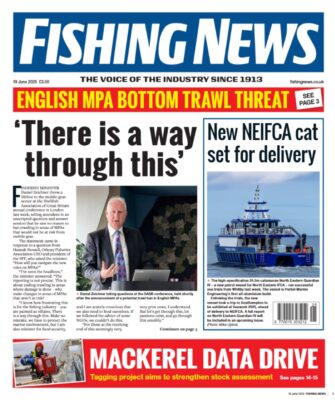NatureScot seeks fishermen’s help in documenting recovery of key apex predator
By Dr Jane Dodd, NatureScot
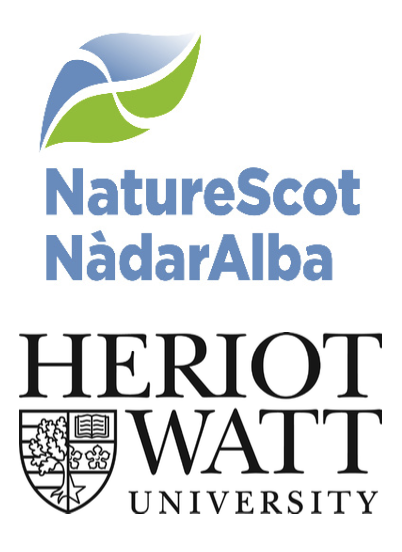
In Scotland, we have been seeing positive signs of a recovery in flapper skate numbers. This is welcome news for a species that was previously reduced to the point where it was classified as critically endangered across its range by the International Union for the Conservation of Nature (IUCN). In UK waters, the species’ population declined significantly in the 20th century, and it was considered lost from the North Sea and Irish Sea.
However, changes in fishing activity, together with fishery management and conservation measures over the last 30 years, are reversing the downward trend.
Flapper skate were previously known as common skate; in 2010, it was found that two species had been recorded as common skate. These two species are now known as the blue skate (Dipturus batis) and the flapper skate (Dipturus intermedius).
While our understanding of the biology and status of flapper skate is informed by regular fish surveys and through research projects, NatureScot recognises that fishers have a great deal of valuable knowledge about the species they encounter and how they could be managed.
We are aware that fishermen are encountering flapper skate more frequently and across a wider geographical range. We want to understand the nature of interactions between flapper skate and different fisheries, and to discuss ideas and options for how these interactions can be managed while maintaining the recovery.
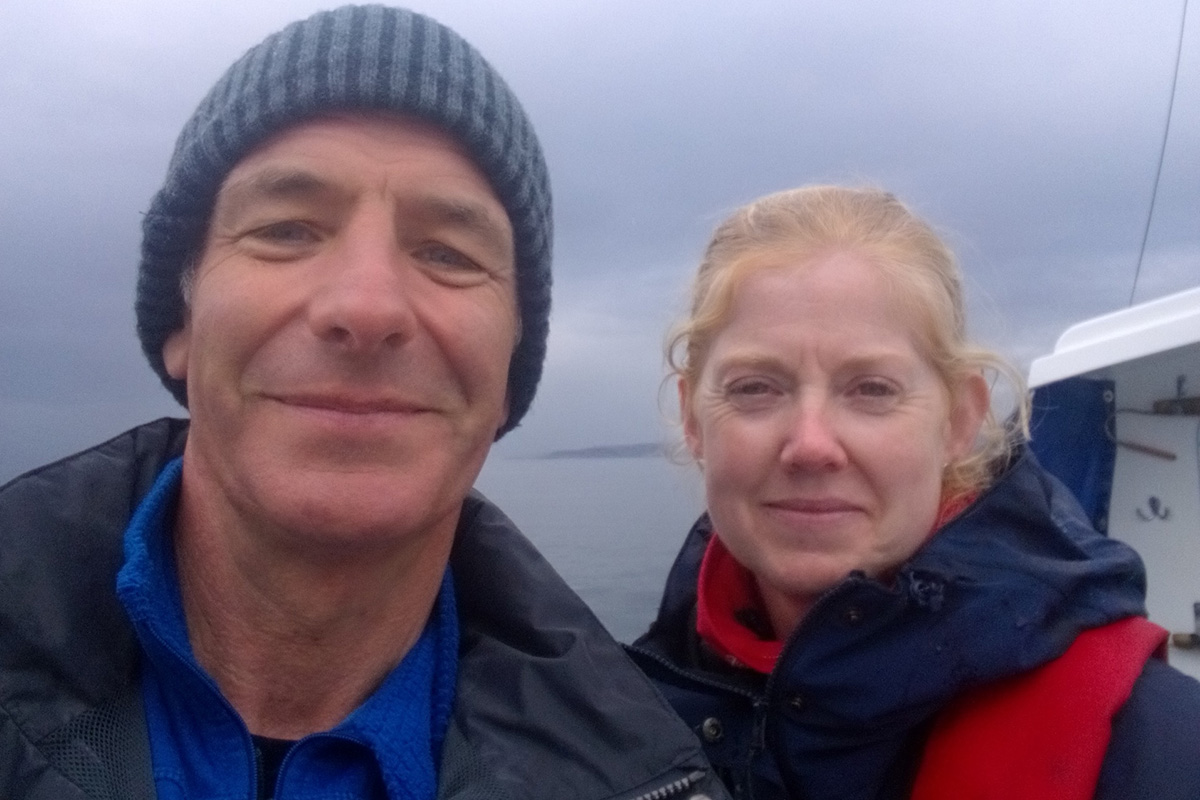
Jane Dodd of NatureScot, pictured on a skate fishing trip with celebrity angler Robson Green, filmed last year for Channel 5. Recovering flapper skate populations on the west coast of Scotland have seen a boom in angling tourism targeting the species.
For example, there is the ongoing requirement to release flapper skate unharmed, and we understand the practical difficulties that this can entail. Therefore, best practice in handling is something we think could be usefully explored and developed.
In order to gather views from fishers, researchers from Heriot-Watt University – Professor Michel Kaiser, Professor Paul Fernandes and Rosie Ashworth – are carrying out a study and will visit fishing ports around Scotland over the next few months to speak to and interview those who would like to contribute. The intention of this research is to provide a more rounded perspective that will help NatureScot when advising on flapper skate conservation.
It follows up on our recent report on the distributions of elasmobranchs and interactions with fisheries, which is available on the NatureScot website.
Lifting tarpaulins to help with the removal of skate from fishing vessels will be made available to those taking part. If you would like to contribute, please contact: jane.dodd@nature.scot or: r.ashworth@hw.ac.uk
The full survey can be filled in online, and is designed to be as quick and easy as possible. It can be accessed here.
How will fishermen’s data be used?
The recovery of flapper skate is very much a ‘good news’ story for the fishing industry, and another indicator of recovering marine ecosystems. Nevertheless, our experience at FN suggests that many working fishermen are wary about providing information on conservation issues, due to fears that this will come back to bite them, and result in new regulations that impact their fishing – so we put a few additional questions to Jane Dodd of NatureScot, and have published her answers in full…
FN: There is a perception that every time an environmental NGO hears about a ‘rare’ species being seen by fishermen, it immediately wants fishing banned from that area, or a ban on that type of gear. Won’t fishermen reporting what they are seeing to NatureScot simply risk them losing access to grounds as a result?
NatureScot: We think the current evidence supports a recovering trend for the flapper skate both in population abundance and in range. Factors contributing to the recovery include the current fishery management measures and changes in fishing activity/ intensity since the 2000s, and this is good news. However, the species is recovering, not recovered, and there is an ongoing need for actions to maintain the recovery trend. Our view is that the continued recovery of flapper skate requires a mixture of actions which include:
- The existing fishery management measures
- Developing best practice in the handling of skate to limit mortality when taken as bycatch • Protecting essential habitat for skate including the Loch Sunart to the Sound of Jura MPA and the skate egg nursery at Red Rocks and Longay MPA
- Ongoing research to understand the status of the skate population and its ecology.
While we believe that protected areas are an important tool in this mix, that is not the focus of our current approach. We think that the right mix of management actions and measures will result from dialogue to build a shared understanding of the issues, consider solutions and agree shared goals.
We want the advice NatureScot provides about flapper skate conservation to be built on the best available information, and we think that comes from formal science along with information from those working at sea. We value the experience and knowledge that exists in the industry.
We are aware of the issues of trust that affect our relationships with the catching sector, and the concerns about what information will be used for. But this is a genuine effort to reach out, as a shared perspective will be especially important as the recovery leads to a higher frequency
of encounters over a wider geographical area.
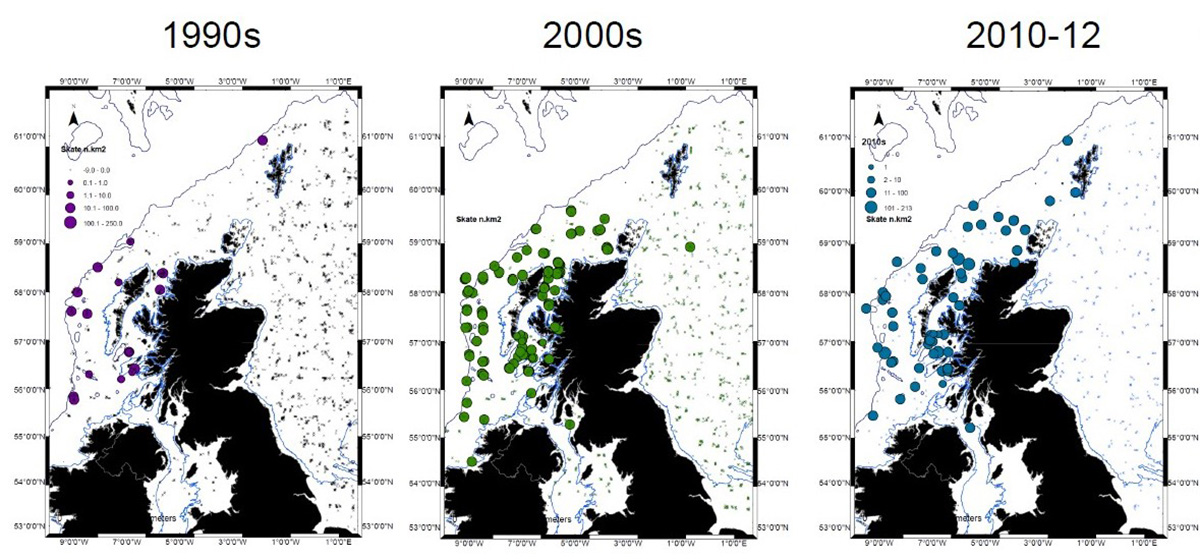
Over the last few decades, the range and numbers of flapper skate have shown a slow but significant increase, after decades of decline.
FN: Say I am a static-gear fisherman, actively seeking to avoid interaction with flapper skate, which wreck my gear. Won’t my answers – that I catch as few flapper skate now, as I did 20 years ago – make them seem rarer than they are, when in fact I have been shifting my fishing grounds to avoid them?
NatureScot: We hope we have designed the questionnaire to capture this information. If
it does not, you will have an opportunity to offer anything you feel you haven’t had the chance to say at the end of the survey.
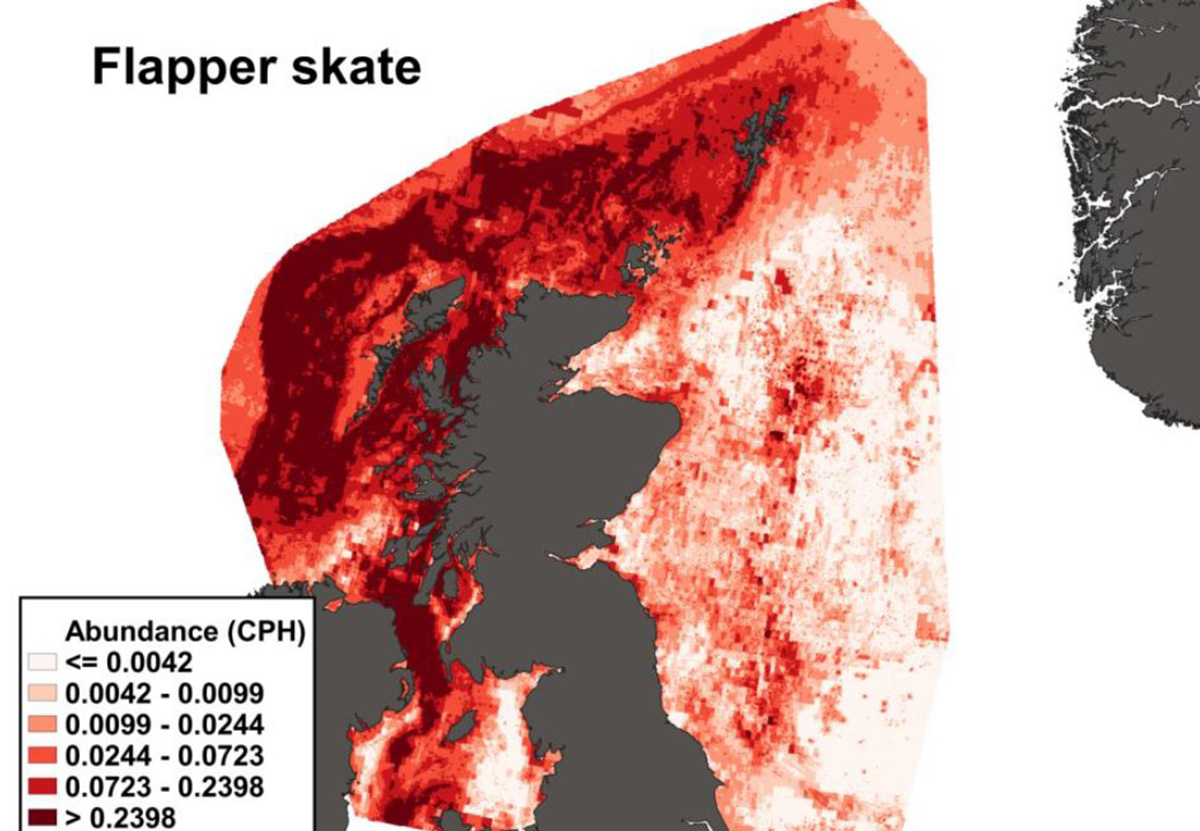
Estimated densities of flapper skate around the UK, based on recorded catch rates.
FN: If in fact these ‘rare’ fish prove to be much more common than many people suspect, what will this mean in terms of rules designed to protect them, based on their changing, and improving, conservation status?
NatureScot: The flapper skate population of Scotland is recovering, not recovered, and there is an ongoing need for actions to maintain the recovery trend. The IUCN regularly reviews its assessments of conservation status, and if flapper skate continues to recover, it is possible that the IUCN will change the status of flapper skate. The information being collected in this project will help to inform future assessments.
A change in conservation status is unlikely to change the management measures within the MPAs (Loch Sunart to the Sound of Jura and Red Rocks and Longay) that protect essential habitats for flapper skate, but it could change the approach to their conservation elsewhere.
Continued recovery will lead to a higher frequency of encounters between the catching sector and flapper skate over a wider geographical area, which increases the need for us to understand the interactions and discuss options for how we manage them.
This story was taken from the latest issue of Fishing News. For more up-to-date and in-depth reports on the UK and Irish commercial fishing sector, subscribe to Fishing News here or buy the latest single issue for just £3.50 here.
Sign up to Fishing News’ FREE e-newsletter here.

